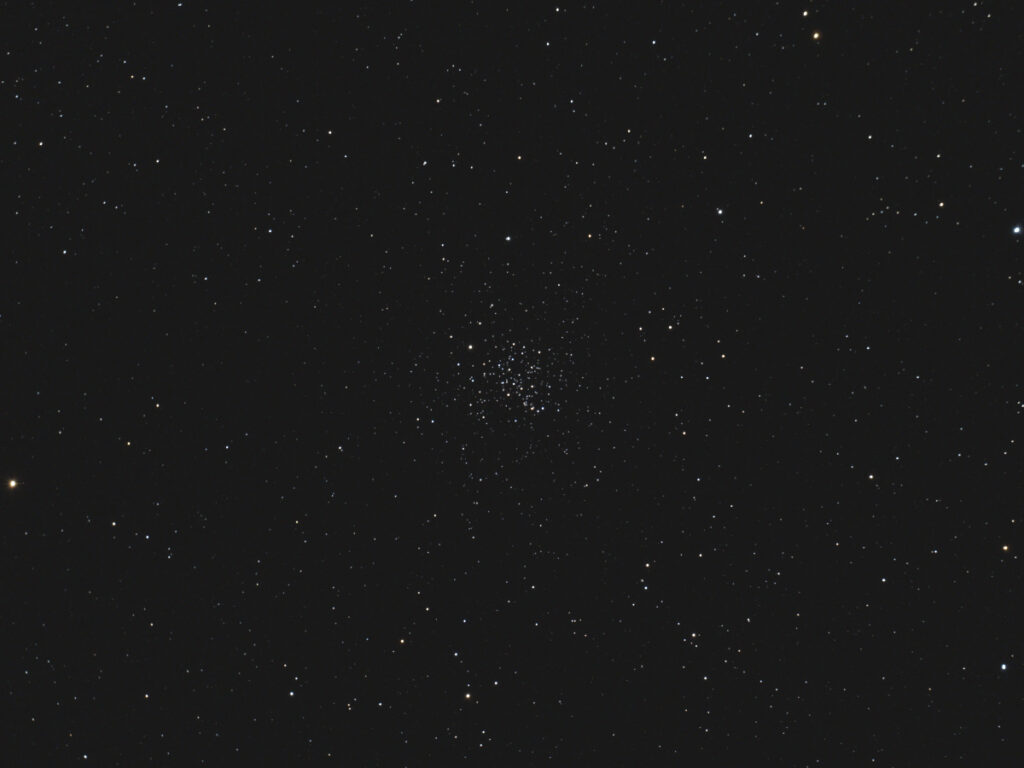
Telescope: ES Comet Hunter MN6 at f/4.8, Orion Atlas EQ-G
Camera: Baader modified Nikon 610
Filter: High Point 2” IR Blocking Filter
Guide scope: Williams Optics 50mm, ASI290MM mini, PHD
Exposure: 23x60sec, ISO 200, saved as RAW
Darks: Internal (Long Exposure Noise Reduction On)
Flats: 32×1/4sec, tee shirt flats taken at dusk
Average Light Pollution: Red zone, Bortle 8, poor transparency, moonlight
Lensed Sky Quality Meter: 18.0 mag/arc-sec^2
Stacking: Mean with a 2-sigma clip.
White Balance: Nebulosity Automatic
Software: Backyard Nikon, Nebulosity, Deep Sky Stacker, Photoshop
M48 is a rich open cluster located in western Hydra near the border with Monoceros in a relatively open stretch of sky on the fringe of the Milky Way. A fine object in binoculars or small telescope it may even be glimpsed without an optical aid under dark skies. This is another fine example of the wide field offered by the combination of the DHL Comet Hunter and a full-frame DSLR.
M48 is currently well placed in the evening sky high in the south after sunset.









Recent Comments